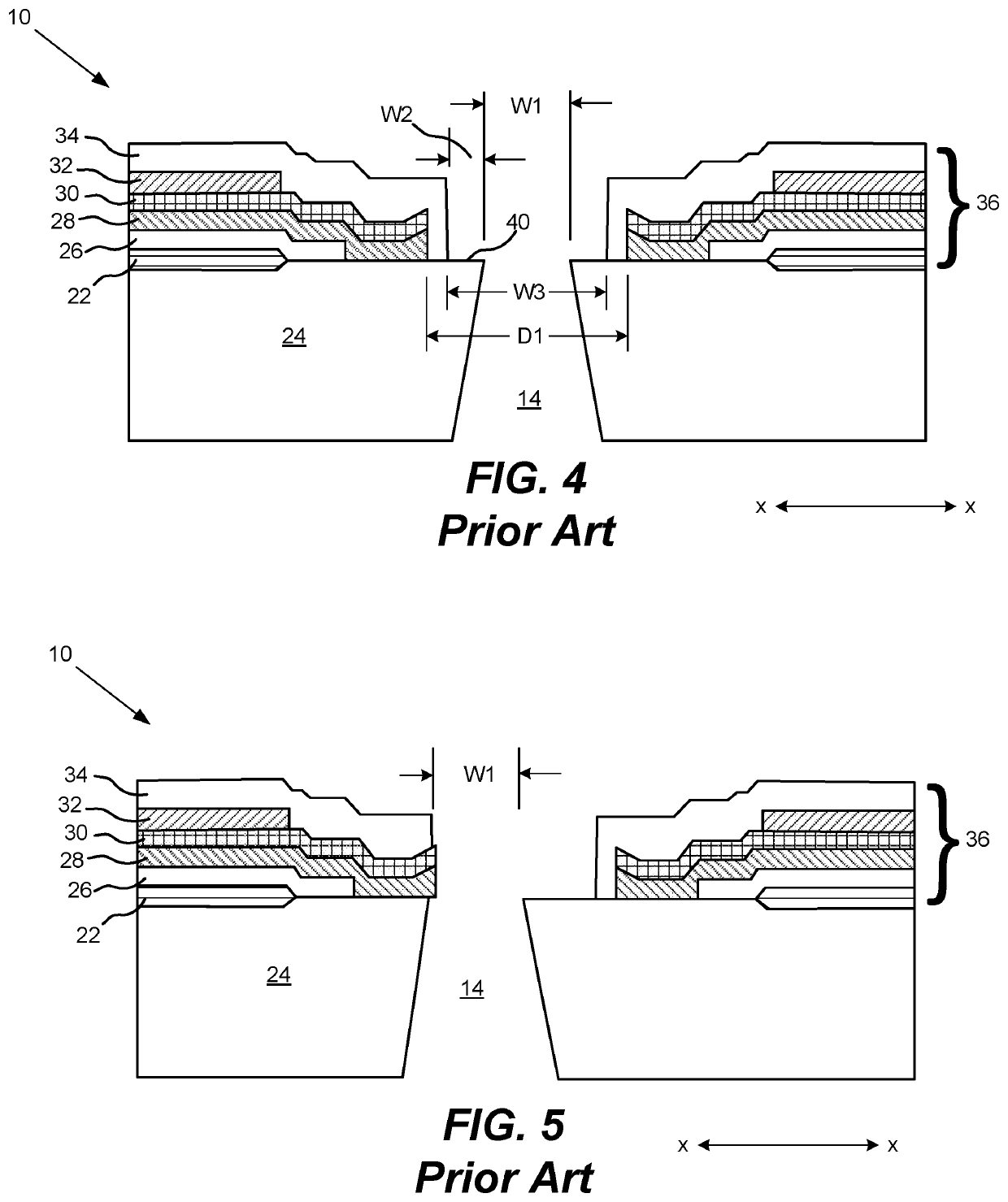Deep reactive ion etching process for fluid ejection heads
a technology of reactive ions and fluid ejection heads, which is applied in the direction of separation processes, instruments, filtration separation, etc., can solve the problems of difficult to provide a reproducible shelf width wb>2/b>, inability to maintain a stable thermal environment, and time-consuming and problematic, so as to improve the protection of the fluid ejector stack, simplify the wafer inspection, and reduce the rough edge of the fluid supply vias
- Summary
- Abstract
- Description
- Claims
- Application Information
AI Technical Summary
Benefits of technology
Problems solved by technology
Method used
Image
Examples
Embodiment Construction
[0018]As shown in FIGS. 4-5, the maximum entrance width or the fluid supply via 14 for the prior art fluid ejector stack 36 ranges from about 60 (W1) to about 520 microns (W3). Such fluid supply width is maintained in order to prevent under-etching the fluid ejector stack 36 as shown in FIG. 5 and expose the metal layer 30 to corrosion from the fluid ejected by the ejection head.
[0019]In order to better protect the metal layer 30 so that the reliance on the silicon shelf is reduced, an improved fluid ejector stack 50 for an ejection head chip 52 is provided in FIGS. 6-7. The fluid ejector stack 50 is shown in cross-sectional view in they direction through the fluid supply via 14.
[0020]Like the prior art ejection head chip 10, the ejection head chip 52 includes a first layer field oxide layer 54 adjacent to the silicon substrate 24. Next, an insulating layer 56 that may be a doped glass layer such as a phosphorus-doped silicon glass layer is deposited or grown on the field oxide laye...
PUM
| Property | Measurement | Unit |
|---|---|---|
| width | aaaaa | aaaaa |
| width | aaaaa | aaaaa |
| thickness | aaaaa | aaaaa |
Abstract
Description
Claims
Application Information
 Login to View More
Login to View More - R&D
- Intellectual Property
- Life Sciences
- Materials
- Tech Scout
- Unparalleled Data Quality
- Higher Quality Content
- 60% Fewer Hallucinations
Browse by: Latest US Patents, China's latest patents, Technical Efficacy Thesaurus, Application Domain, Technology Topic, Popular Technical Reports.
© 2025 PatSnap. All rights reserved.Legal|Privacy policy|Modern Slavery Act Transparency Statement|Sitemap|About US| Contact US: help@patsnap.com



